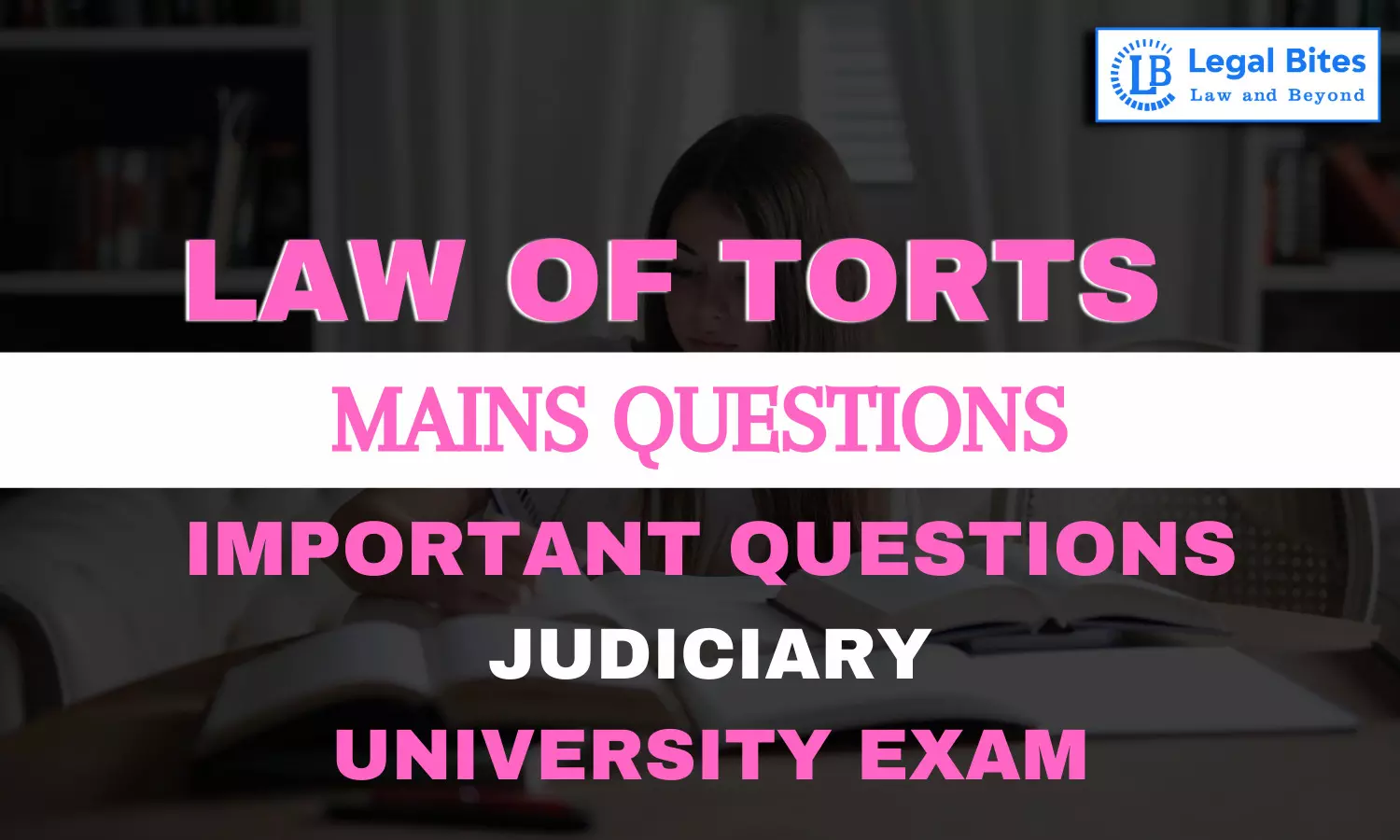Explain the maxims injuria sine damno and damnum sine injuria citing relevant case law.
Find the question and answer of Law of Torts only on Legal Bites.

Question: Explain the maxims injuria sine damno and damnum sine injuria citing relevant case law.Find the question and answer of Law of Torts only on Legal Bites. [Explain the maxims injuria sine damno and damnum sine injuria citing relevant case law.]AnswerInjuria sine damno and damnum sine injuria are two legal maxims used in tort law to determine whether a plaintiff has a valid claim for damages. The maxims are used to evaluate whether the plaintiff has suffered a legal injury and...
Question: Explain the maxims injuria sine damno and damnum sine injuria citing relevant case law.
Find the question and answer of Law of Torts only on Legal Bites. [Explain the maxims injuria sine damno and damnum sine injuria citing relevant case law.]
Answer
Injuria sine damno and damnum sine injuria are two legal maxims used in tort law to determine whether a plaintiff has a valid claim for damages. The maxims are used to evaluate whether the plaintiff has suffered a legal injury and whether that injury has caused compensable damages.
Injuria sine damno is a Latin term that means "injury without damage." This maxim refers to situations where the plaintiff has suffered a legal injury but has not suffered any actual damage. In other words, the plaintiff has not suffered any financial loss or harm, but they have suffered a violation of their legal rights.
A classic example of injuria sine damno is the case of Ashby v. White, (1703) 92 ER 126. In this case, Mr Ashby was prevented from voting in an election by Mr White, the returning officer. Mr Ashby sued Mr White for depriving him of his legal right to vote, even though he did not suffer any actual damage. The court ruled in favour of Mr Ashby, holding that he had suffered an injury to his legal rights, even though he did not suffer any financial loss.
Damnum sine injuria is another Latin term that means "damage without injury". This maxim refers to situations where the plaintiff has suffered financial loss or harm, but the loss is not the result of any legal injury. In other words, the plaintiff has suffered a loss, but there has been no violation of their legal rights.
A classic example of damnum sine injuria is the case of Gloucester Grammar School Case, (1410) Y.B. 11 hen. IV of 47. In this case, a new school opened in the town, and as a result, the Gloucester Grammar School suffered a loss of students and income. However, the court held that the new school did not violate any of the legal rights of the Gloucester Grammar School, and therefore, the school had no valid claim for damages.
In summary, the maxims of injuria sine damno and damnum sine injuria are important in tort law, as they help to determine whether a plaintiff has a valid claim for damages. If the plaintiff has suffered a legal injury without any actual damage, they may still have a valid claim. On the other hand, if the plaintiff has suffered a financial loss, but there has been no violation of their legal rights, they may not have a valid claim.

Mayank Shekhar
Mayank is an alumnus of the prestigious Faculty of Law, Delhi University. Under his leadership, Legal Bites has been researching and developing resources through blogging, educational resources, competitions, and seminars.
